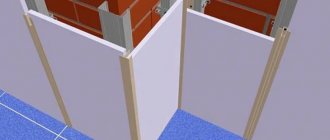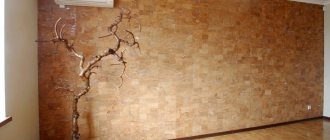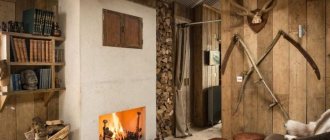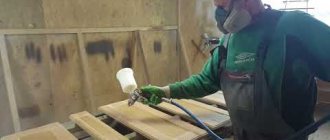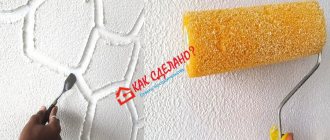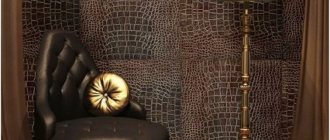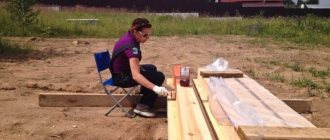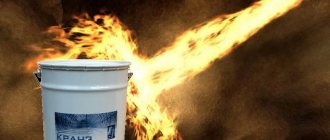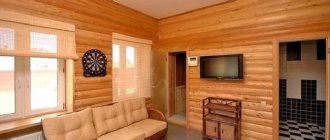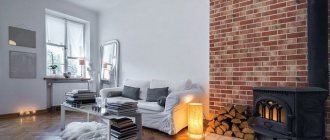Wall panels made from modern materials appeared relatively recently and quickly gained popularity.
The opportunity to quickly transform your home, correct construction defects, and realize the idea of a cozy, beautiful home made of high-quality finishing materials attracts its buyer.
Among these materials, sheet wall panels made in different finishes stand out noticeably.
Types of sheet building materials
Sheet building materials are slabs that have certain dimensions, made from different materials using different technologies. Sheet materials are used both in construction and finishing works. In addition, sheet material can be used to construct partitions or to embody various designer ideas. Working with this building material is not particularly difficult, and its proper processing will ensure a minimum amount of waste during construction work. Installation of sheets to the ceiling or wall is carried out using a special sheathing, which is made of a metal profile or wooden beam. Fasteners are made using self-tapping screws. Laying sheet materials on the floor is done using a special construction adhesive.
Below are the main types of sheet building materials.
Features of use
A feature of the use of sheet panels made from wood materials is the need for their proper preparation for installation.
Before carrying out installation work, the slabs must rest on a flat, level surface for one day to eliminate possible deformations caused by their storage and transportation. This will eliminate the possibility of cracks and gaps forming between the panels during installation.
Before installation work, it is necessary to prepare the walls, protecting them from mold and mildew. For this purpose, special compositions are used for treating walls. The walls are pre-treated with sandpaper to remove roughness.
When making wall sheathing, it is required that the sheathing material be dried to prevent its deformation after installation work. The joints between the panels are coated with sealant or covered with special slats.
Fiberboard (Fibreboard)
Fiberboard ( fibreboard ) or hardboard – sawdust and small wood shavings pressed under high temperature using a special additive for gluing . The additive serves as a binding component, the content of which is quite low. This factor classifies fiberboard as an environmentally friendly building material. Fiberboard is a material that can be used in rooms with low humidity. It cannot be used in damp areas. Most often used for leveling floors and walls, as well as in furniture production. The sheets have a thickness of 3.2-5 mm.
Read more about fiberboard: Application and characteristics of fiberboard
How to protect yourself from formaldehyde fumes
First of all, it is necessary to use only EO and E1 slabs indoors.
Before installation, it is advisable to keep the material in the open air (protected from moisture) for about 4 months so that formaldehyde vapors disappear. A room in which OSB was used should be ventilated as often as possible and avoid overheating. At temperatures above 30ºС, formaldehyde evaporates very actively. For the same reason, air humidity above 70% should be avoided.
Read more in the article “Chips of the correct orientation”
2
Wood-laminated board (plywood)
Wood-laminated board (plywood) is a material based on wood veneer. The peculiarity of this type of sheet material is that the veneer layers are laid perpendicular to each other and connected by pressing with the introduction of a binder component. The material has high strength and is hygroscopic. Used for making furniture, building walls and bases for flooring. The plywood sheet has a thickness from 4 to 24 mm.
Read more about Plywood: Scope of application of plywood and its characteristics
Imitation of timber
This is a natural material - natural wood, which is actively used in decoration as an alternative to lining or block house. The material looks harmonious on the facade of dachas, bathhouses, and country cottages. The naturalness of the material allows it to fit into the landscape without any difficulties, emphasizing its environmental friendliness.
Wooden panels “under the beam” are made from linden, birch, pine or larch, and the last two options are most often used. They can be produced up to 35 mm thick, up to 24 cm wide and up to 6 meters long. There are 4 classes of imitation timber available, from material with possible defects of class C and with minor flaws of class B to first-class class A and extra class, which is designated E.
Imitation timber has excellent decorative characteristics, especially since the color of the wood can be changed using impregnations, varnishes and oils. These panels are lightweight, do not create additional load on the foundation, retain heat well and provide additional sound insulation.
But the total service life of imitation timber is unlikely to exceed 15 years. In addition, every 2-3 years the casing will need to be varnished to protect it from drying out and insects. In addition, the material remains a fire hazard, and can rot due to high humidity.
Oriented strand board (OSB)
Oriented strand board ( OSB ) is made from thin chips up to 150 mm long by pressing, with the introduction of additional components . The components are resins, boric acid, synthetic wax. Refers to fairly durable types of sheet building materials. Used when performing roofing work, in the construction of frame-panel houses. One sheet has a thickness of 9-10 mm. There are three types of OSB: varnished, laminated and tongue-and-groove.
Read more about OSB: Description, application and characteristics of OSB
Gypsum plasterboard sheet (GKL)
Gypsum plasterboard sheet ( GKL ) is the most common sheet material, the basis of which is gypsum, pasted on both sides with cardboard. It is used both in construction and in the finishing of individual premises. The sheet has a thickness of 7-12 mm. There are several types of plasterboard sheets: moisture-fire-resistant (GKLVO), fire-resistant (GKLO), moisture-resistant (GKLV), ordinary (GKL). They are most often used in the construction of partitions and suspended ceiling structures, as well as for leveling walls.
Read more about gypsum boards: Types and uses of drywall
Gypsum fiber sheet (GVL)
Gypsum fiber sheet ( GVL ) is a building material that contains gypsum with loose cellulose waste paper. Differs from gypsum plasterboard in increased strength. Scope of application – dry floor screed, creation of interior partitions, suspended ceilings. GVL is easy to use and easy to finish. The sheet has a thickness of 10-12.3 mm.
Read more about GVL: Application, technical characteristics and features of GVL
Glass-magnesium sheet (GML)
Glass-magnesium sheet ( GFS ) is a sheet finishing material based on magnesium binder. High strength, sound insulation, elastic. Refers to fire-resistant sheet materials. Suitable for finishing and machining. Used in damp rooms as a base for flooring, as a facing material for ceilings, when leveling walls, and for installing interior partitions.
Read more about SML: Characteristics and application of glass-magnesium sheets (SML)
What are moisture-resistant wall panels
Moisture-resistant panels are a finishing material that is resistant to humid environments. Available in flat sheets of different sizes and shapes.
A number of materials with varying levels of hygroscopicity are used in production:
- polyvinyl chloride (PVC);
- cork;
- pressed wood fibers, shavings and dust (chipboard and MDF);
- mirror;
- glass or acrylic.
Moisture-resistant wall panels are decoratively attractive: they are available in a wide range of colors, various reliefs and structures. The laser technique of applying a pattern to the surface imitates expensive finishing textures:
- ceramic tiles;
- marble covering;
- natural wood;
- wild stone.
Photo printing techniques are used on polymer materials. The products are used to decorate the kitchen wall apron and are used as a bright accent in the design of bathrooms.
Fiberboard (MDF)
Medium Density Fiberboard ( or MDF for Medium Density Fiberboard) - made by pressing wood chips (dry method) under high pressure and temperature . Carbide resins are used as an adhesive composition. Used for finishing furniture, arranging interior doors, and as a decorative finish.
Read more about MDF: Characteristics and scope of MDF
Chipboard (chipboard)
Chipboard ( chipboard a material made from large wood chips, joined with glue under the influence of a press . This building material is easy to process and also has a low cost compared to other sheet materials. Panels for interior decoration are made from chipboard. The downside is that it is quite difficult to use fasteners during installation. Self-tapping screws and self-tapping screws are poorly screwed.
Read more about chipboard: Application, types, technical characteristics of chipboard
Clinker thermal panels
One of the most modern materials for finishing a house outside are linker thermal panels. They are multi-layered:
- The bottom layer is thermal insulation. It is presented in the form of insulation: polystyrene foam or polyurethane foam, which have good thermal insulation.
- The top layer is decorative. Most often represented by clinker tiles, which have maximum strength and very high frost resistance. The tile very naturally imitates brickwork, makes the facade aesthetic and neat, and also protects the insulation from wind, precipitation and sunlight.
Joining clinker panels
Due to this structure, clinker thermal panels simultaneously act as both insulation and decorative finishing. This allows you to speed up the installation process, since the stage of covering with thermal insulation boards is skipped. The advantages of thermal panels are also noted:
- high density of panel joints, eliminating the penetration of cold air;
- low percentage of water absorption (you can wash the facade with water from a hose);
- light weight (a strip foundation is sufficient, no reinforcement is required);
- quick and easy installation directly on the wall.
Installation of thermal panels
Thermal panels have a special tongue-and-groove locking system, which ensures very tight adhesion of individual elements. To finish the entire facade, manufacturers produce straight and wall thermal panels, as well as corner elements for them.
General panel installation technology:
- Preparing walls: eliminating irregularities, depressions, chips and other defects.
- Lathing installation - necessary when installing on a surface with uneven surfaces, for example, a log house. For the required rigidity, each thermal panel must be attached simultaneously to 3 sheathing bars. For example, let's take the Cherry rustik thermal panel (price from 2,250 rubles/m2) with a length of 1050 mm. To place it on three vertical bars, they must be spaced in 350 mm increments (1050/3 = 350 mm).
- Direct installation of thermal panels. They are attached to the sheathing using self-tapping screws and dowels, and to the walls using an adhesive composition intended for outdoor use.
- Grouting joints if the panels were laid using joint technology. This is necessary for the final insulation of the insulation.
How to install thermal panels directly on the wall
Gypsum particle board (GSP)
Gypsum particle board ( GSP ) is a durable material made by pressing gypsum with wood chips without the use of glue or resins. The semi-dry production method involves adding water and uniformly applying chips over the entire surface area. This is done in order to increase the load-bearing capacity of the structure. GSP refers to environmentally friendly, safe building materials. The sheet density is 1250 kg/m3. Used for cladding internal walls, ceilings, floors, and arranging interior partitions. The combination of gypsum and wood chips in GSP provides the material with properties such as: good sound insulation (up to 32-35 dB), maintaining a balance of moisture exchange in the room, impact resistance, non-flammability, and high strength. The front side of the slab has a light and smooth surface. Sheet thickness 8-12 mm. There are the following types of GSP: regular and moisture-resistant (GSPV).
Read more about GSP: Application, operating features and characteristics of gypsum particle boards (GSP)
Cement particle board (CSP)
Cement particle board ( CSP a high-strength, moisture-resistant construction product, made by combining cement with thin wood shavings. An additional component is a chemical additive that reduces the harmful effects of chips on cement. This material is distinguished by its durability and has good sound and heat insulation properties. The listed factors make it possible to use slabs as a material for wall cladding, both inside and outside the building in various climate conditions. DSP is easy to work with and process, just like wood. True, unlike the latter, DSP is not susceptible to the influence of insects, rodents, and fungal bacteria. Cement provides good fire resistance. And wood shavings prevent the slab from cracking from frost or high air temperatures.
Read more about DSP: Characteristics and application of DSP
conclusions
You can buy any finish, but when choosing, it is important to consider the style in which the house is decorated. Thus, the “folk” rustic style is perfectly conveyed through the use of stone and plaster. Brick and wood can be used for a rustic style cottage. A classic building will look good with stone or porcelain stoneware. And minimalist modern buildings can be faced with metal or panels, plain or concrete-like.
You can see even more photos and videos of beautiful houses in the Grand Line gallery.
Aquapanel
Aquapanel is a moisture-resistant sheet composite material based on cement (without asbestos) and mesh fiberglass. As an additive, a mineral filler is used - fine expanded clay, which acts as a “core”. Fiberglass fabric is laid in an even layer over the entire surface of the panel. The edges of the building material have a rounded shape. The product is environmentally friendly due to the absence of asbestos and organic substances. Scope of application – finishing work inside and outside the premises (facades, cladding, partitions). The plate is highly resistant to mechanical stress and high levels of air humidity, so it will not deform during operation. The material is not subject to rotting. The edges of the aquapanel are trimmed and the edges are reinforced. The thickness of the sheet material is 12.5 mm.
Read more about Aquapanels: Application of Aquapanels, operating features and technical characteristics
Application area
A popular material for renovating rooms with above-average humidity levels is ceramic tiles.
Finishing with tiles is an expensive and time-consuming process. If repairs are required quickly and the budget is small, moisture-resistant wall panels are a good alternative to traditional finishing. Without fear, waterproof panels can be used in the kitchen, bathroom and toilet. The service life of the material is more than 10 years. Simple installation and an affordable price will satisfy anyone who wants to update their design quickly and on a budget. And this distinguishes panels from tiles.
Asbestos cardboard (Asbestos cardboard)
Asbestos cardboard (Asbestos cardboard) is a building material that is made on the basis of chrysolite asbestos fiber, with the addition of a binder component (starch). This type of sheet material is fire-resistant, has insulating properties, high mechanical strength, alkali resistance, and durability. Sheets of asbestos cardboard are used for fire protection and thermal insulation, for sealing joints of equipment and communications. There are three types: KAON-1, KAON-2 - general purpose; KAP - spacer. The method of laying on the insulated surface does not require special work skills or the use of special tools. The thickness of the sheet material is 1.3-10 mm depending on the type.
Read more about Asbestos Cardboard: Application of Asbestos Cardboard and its technical characteristics
Facing brick
A facade made of facing bricks will have the following features:
- weather resistance;
- status appearance in a classic style;
- fire safety;
- resistance to pollution;
- long service life, up to 50-100 years.
The following brick options can be used for cladding facades:
- silicate: is relatively inexpensive, but has a high moisture absorption coefficient, more than 15%, and is not suitable for regions where it is constantly damp;
- ceramic: looks attractive and stylish, but frost resistance is not very high;
- clinker: also made on the basis of ceramics, but better in operation; Available in a wide range of colors and textures, with a smooth and “ragged” surface;
- hyperpressed is characterized by increased strength and frost resistance, but poor pigment stability and high weight, as well as low heat-insulating characteristics.
But you need to understand that this material requires work experience. It also creates additional load on the foundation, which must be taken into account if the house is already old.
ACEID
Asbestos-cement electrical board ( ACEID ) is a sheet material based on cement. It is a durable board or slab. This type of sheet material has increased heat resistance and high voltage resistance. ATsEID is used as a finishing material for furnaces, for the manufacture of electrical panels, fencing for electric furnaces, etc. That is, where high strength and high voltage protection are needed. They are also used in finishing the facade of a building and creating construction partitions. Used as a soundproofing material. Almost impervious to water and electric current. It is used as a base for electrical machines and devices, in the production of crucible and induction furnaces, housings for arc chambers. The thickness of the aceid can be from 6 to 40 mm. A special tool is required to cut it.
Read more about Atseid: Properties and scope of application of asbestos cement board (Aceid)
Combined options
Combination is used to enhance the aesthetic effect of the cladding. Moreover, in this category there are established traditional finishing methods, but there is also room for experimentation.
For example, among the combined options, half-timbered houses are very popular. This is a German or Austrian style, when plastered walls are complemented by unlined wooden beams that create stiffening ribs. It looks lively and interesting, gives an excellent aesthetic effect.
The combination of a wooden facade and a stone plinth will look no less beautiful. Such a house immediately creates a feeling of reliability. At the same time, you still have the opportunity to experiment with color. So, if you make the house darker at the foundation and lighter in the roof area, you can make the building visually taller. You can also combine the same materials in different colors. For example, plaster can be painted with pigment. It will also look quite nice if you take 2-3 matching colors of siding or corrugated sheets.
Enameled glass (ENAMELIT, STEMALIT)
Enameled glass ( EMALIT , STEMALIT ) is glass resistant to aggressive environments (acids, alkalis), coated on one side with enameled paint. Paint of various colors is applied to the glass surface, after which it is tempered. The product is not exposed to high humidity, has physical resistance to abrasion (scratches), and has mechanical strength. Quite widely used in facade and interior glazing, as a functional or decorative element. Used in cladding buildings (inside and outside); production of equipment, furniture, wall panels, all-glass doors; installation of interior partitions.
Read more about enameled glass: Enameled glass (Stemalit)
Conclusion. The article presents the main types and characteristics of sheet materials used in construction and repair, and also indicates the area of its greatest application and methods of processing each of the types described above.
For interior decoration
Sheet wall panels for interior decoration are made from various materials - it all depends on the capabilities and requirements of the buyer.
For interior decoration
Coating of panels with external finishing is carried out in one of the following ways:
- Painting with paints and enamels (only high-quality enamels and paints are used).
- Lamination with PVC film, imitating the structure of natural materials. Surfaces that imitate natural stone, natural wood, etc. are used.
- Veneering and veneering of surfaces. For these purposes, veneer made of valuable wood species, indistinguishable from natural solid wood, is glued to the surfaces of the slab.
- Decorative milling. After performing figure milling, the outer coating is applied using any of the above methods.
